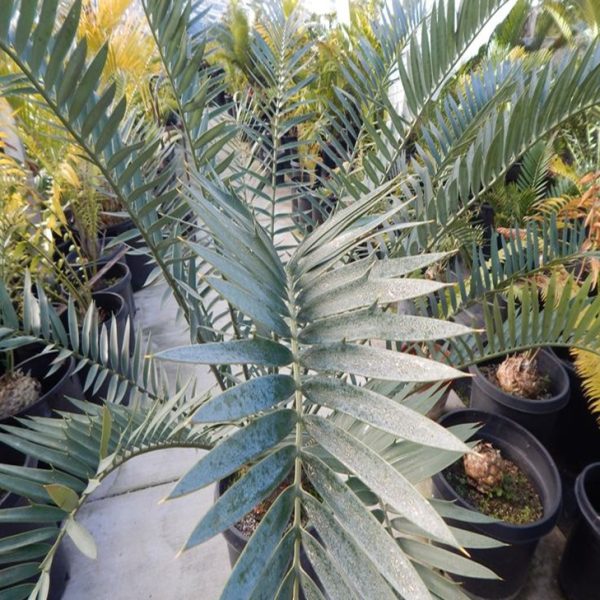Whatapp:
+278.3675.0634
Work Hours
Monday to Friday: 7AM - 7PM
Weekend: 10AM - 5PM

$40.00 – $130.00
Common Names: Eastern Cape Giant Cycad, Breadtree
Family: Zamiaceae
Origin: South Africa (Eastern Cape Province)
Encephalartos altensteinii is a majestic cycad native to the Eastern Cape of South Africa. It’s one of the most adaptable and robust species within the Encephalartos genus, making it a favorite among both landscapers and collectors.
With its stately appearance and long, arching fronds, this species adds a touch of prehistoric elegance to any garden. It’s often used as a feature plant in subtropical and Mediterranean-style landscapes.
Growth Habit: Palm-like, with a thick, single, or occasionally multi-stemmed trunk that can grow over 6 meters tall in time.
Leaves: Long (up to 2.5 meters), dark green, glossy, and arching. Leaflets are narrow, slightly toothed, and emerge in a symmetrical rosette.
Cones: Dioecious (separate male and female plants). Cones are large and cylindrical—male cones are slender and longer; female cones are broader and shorter.
Longevity: Extremely long-lived—some specimens are hundreds of years old.
Growth Rate: Moderate (faster than many other cycads under the right conditions).
| Factor | Requirement |
|---|---|
| Light | Full sun to partial shade |
| Soil | Well-drained, sandy or loamy soil |
| Water | Moderate; drought-tolerant once established |
| Temperature | Tolerates mild frost; prefers warm climates |
| Feeding | Fertilize with slow-release, low-nitrogen fertilizer during growing season |
IUCN Red List: Near Threatened
Protected under CITES Appendix I – trade and cultivation regulated.
Main threats: habitat loss and illegal collection.
Great focal plant for tropical, xeric, or Mediterranean gardens.
Excellent for large containers in courtyards or conservatories.
Often seen in botanical gardens worldwide due to its beauty and historical significance.
This species was named after Dr. Altenstein, a German statesman and patron of science. Some specimens of E. altensteinii have been living in cultivation for over 200 years—such as the one at Kew Gardens in London, planted in 1775 and still alive today!
| Sizes | Small, Medium, Large |
|---|
Reviews
There are no reviews yet.